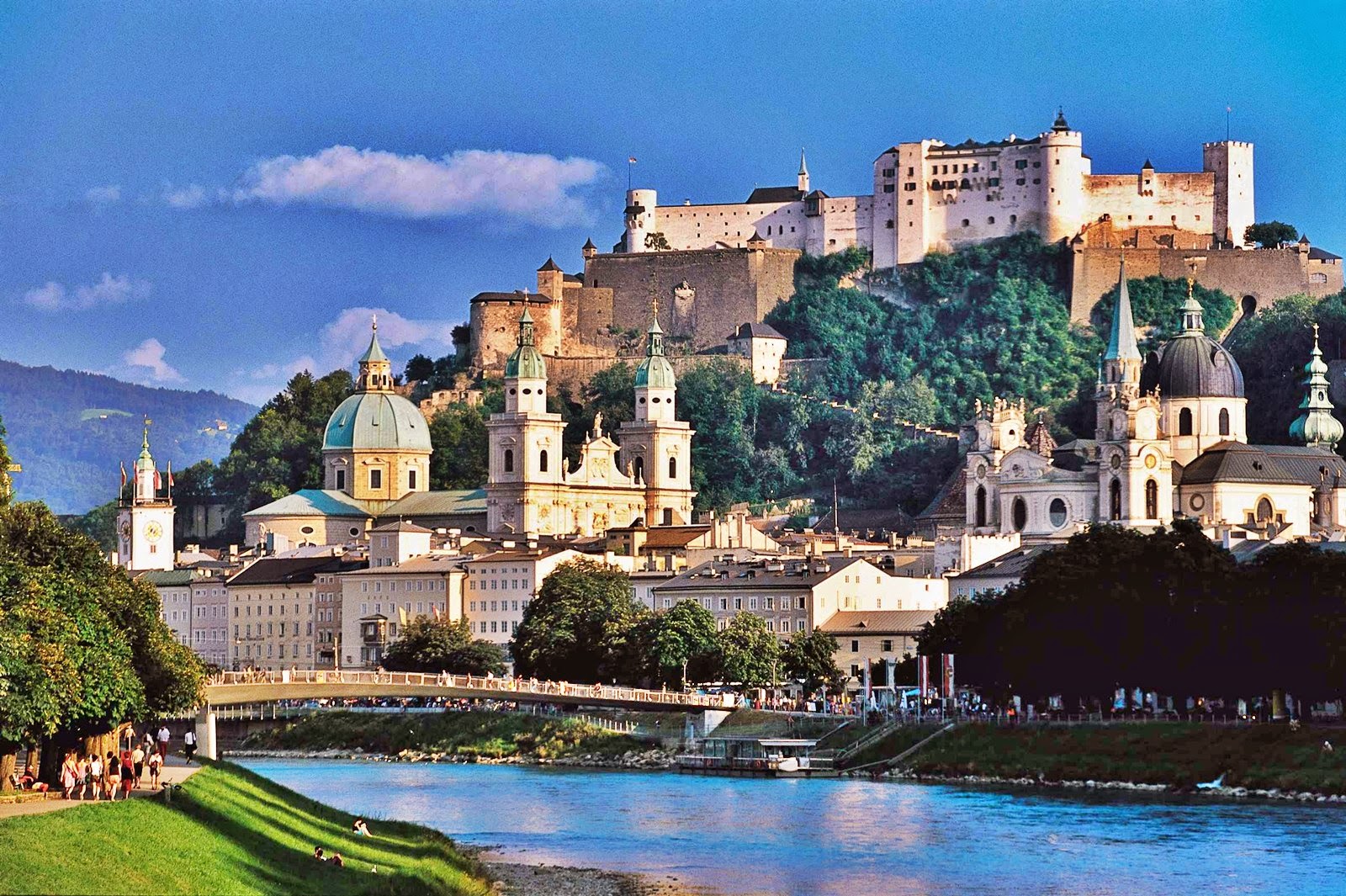The Austrian city of Salzburg is situated on the northern edge of the Alps, close to the border of Germany. Surrounded by lakes and mountains, and straddling the banks of the Salzach River, few cities can match Salzburg’s fairytale setting.
Few places can match its musical heritage either. Salzburg is the hometown of one of the giants of classical music, Wolfgang Amadeus Mozart. Its stately homes, churches, and hillsides provided the settings for one of cinema’s most-adored musicals, The Sound Of Music. And today, its exquisite architecture provides a dramatic backdrop for operatic and classical performances all year round.
Just as a glissando provides the transition between two musical notes, the Salzach River glides between Salzburg’s two parts, the old medieval and Baroque city on the left bank, and the new 19th-century city on the right.
The battlements of Hohensalzburg

For the most commanding views of this compact city and the nearby Alps, take the funicular up to the battlements of Hohensalzburg, one of Europe’s best-preserved medieval fortresses.
Despite Napoleon plundering the best furnishings in 1800, the stately chambers still glitter with gold leaf and the cold steel of ancient weaponry.
The lavish staterooms of the Residenz
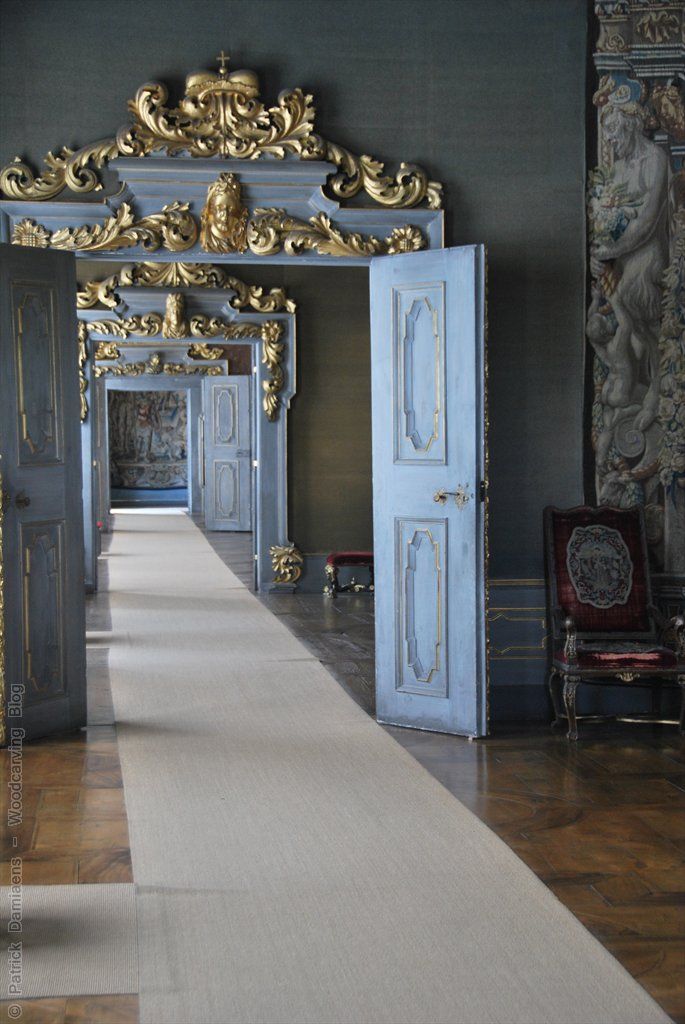
While the fortress was built to protect Salzburg’s ruling prince bishops, the rulers of the principality spent most of their days down below, in the heart of the old city.
For centuries these prince bishops conducted the affairs of Salzburg from the lavish staterooms of the Residenz. Chandeliers of bohemian glass, Venetian mirrors, and lavish ceilings were designed to project power and prestige to those few deemed worthy of visiting, but today the Residenz is open to all.
Salzburg Cathedral
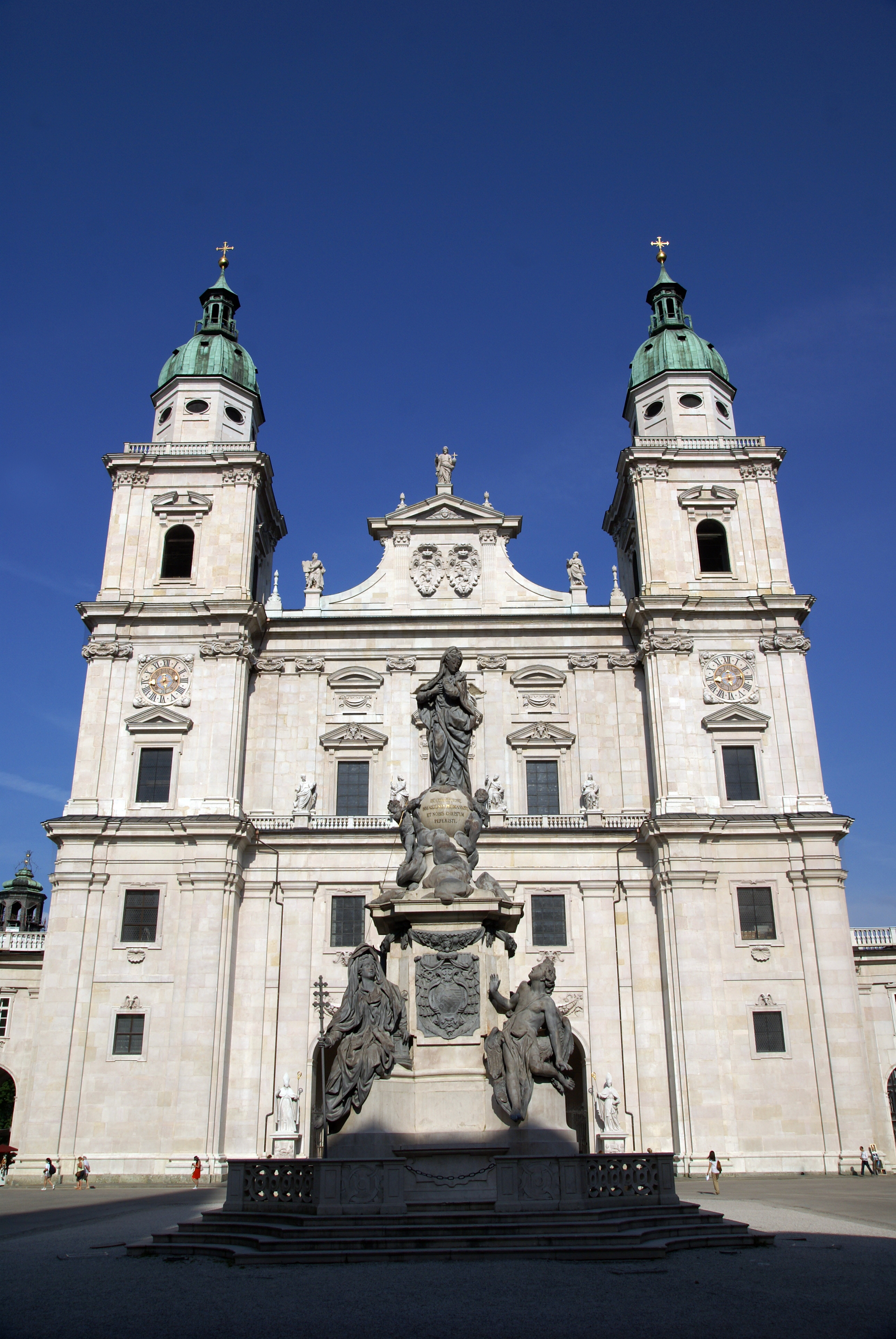
Take a short walk across the Residenzplaz, to the towering pink-marbled splendor of Salzburg Cathedral.
Rising from the ruins of the original Celtic and Roman settlements, the cathedral’s dome has dominated the skyline for over four centuries. It also shelters the very font in which Mozart was baptized.
The Salzburg and Panorama Museum
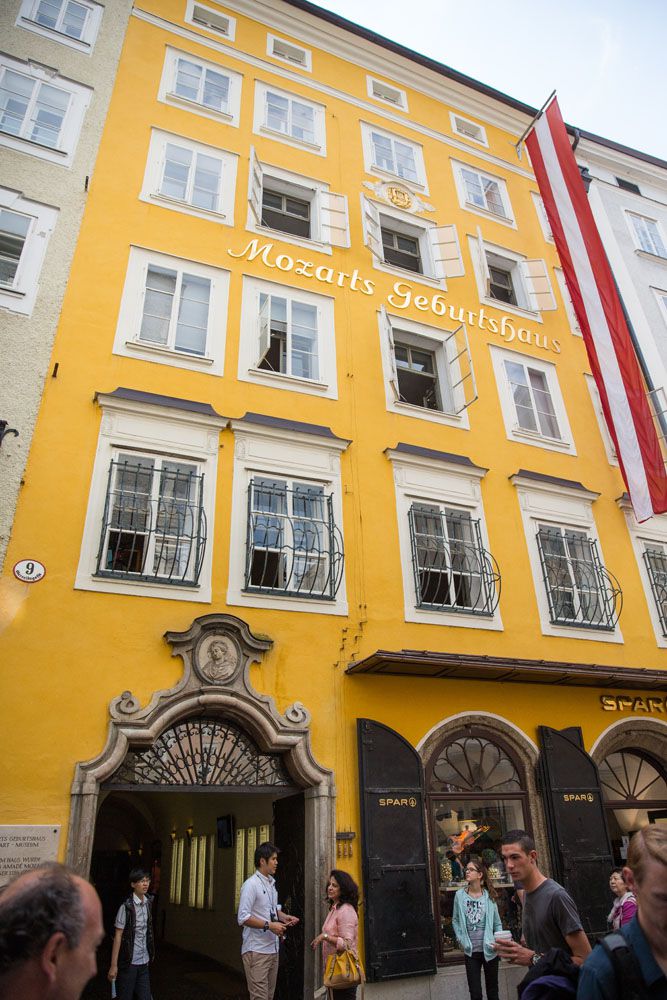
Directly behind the cathedral, journey through the city’s 1,600-year history at the Salzburg and Panorama Museums.
Getreidegasse shopping street
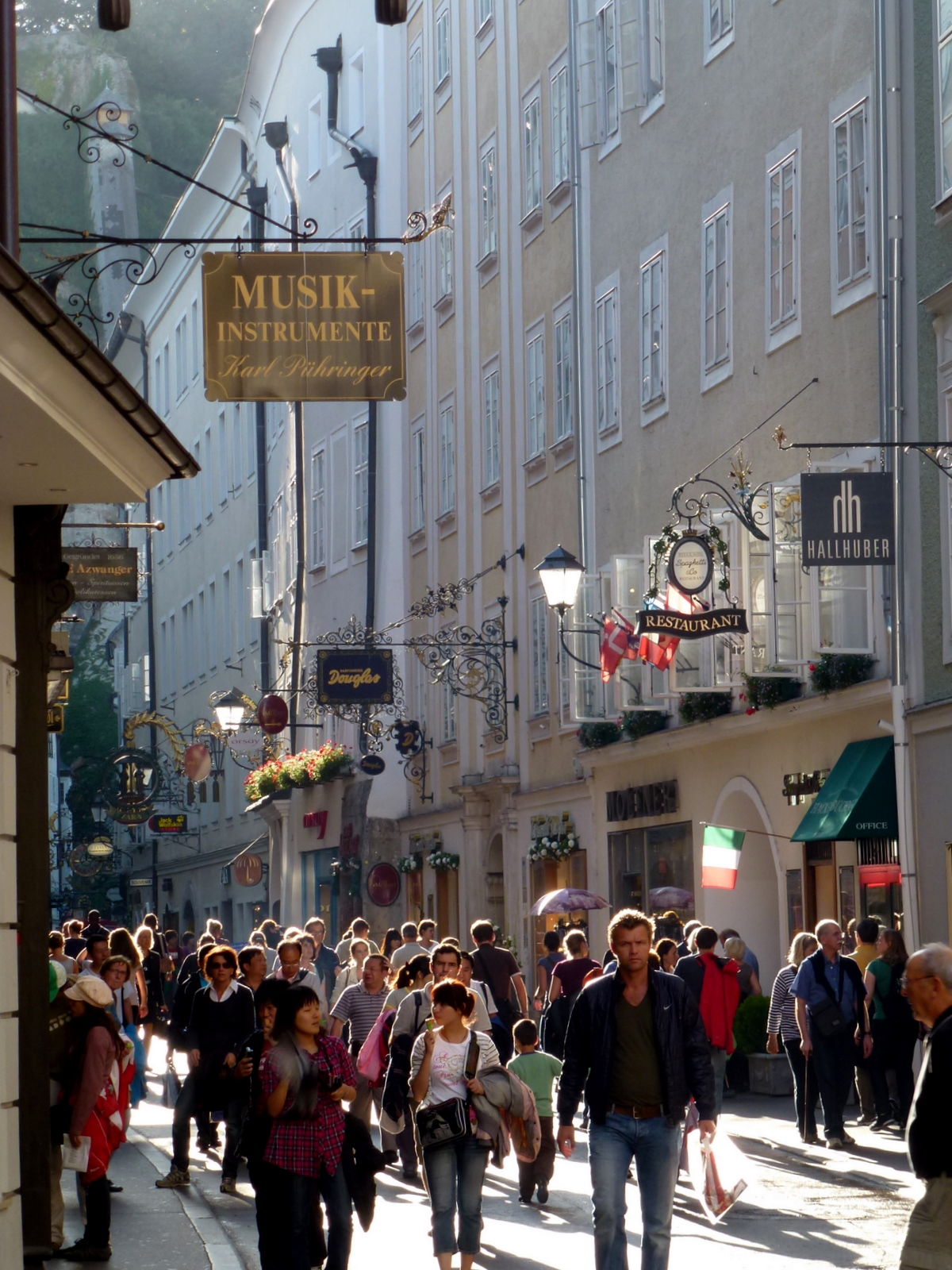
While many of Salzburg’s antiquities are kept safely behind glass, it’s in the streets of the old town where the echoes of the past ring loudest.
Wander along narrow Getreidegasse, one of the loveliest shopping streets in the world. Lose yourself in its many laneways and passages where centuries of craft and tradition are kept alive, and the hands of time seem forever paused.
The 9 Getreidegasse
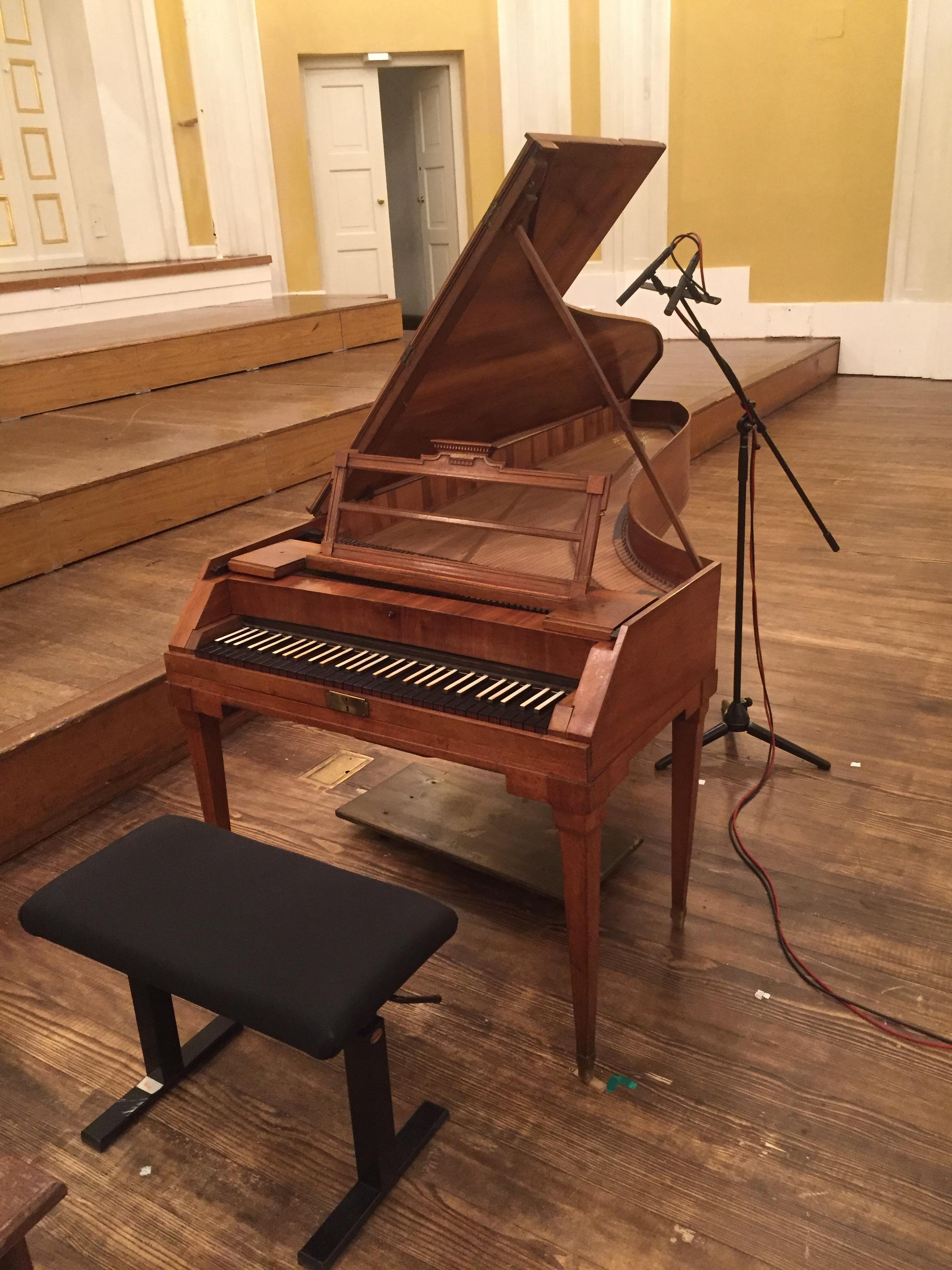
You’ll find Salzburg’s most famous address at number 9 Getreidegasse. Take the stairs to the third floor, where on the 27th of January, 1756, Mozart was born.
The child prodigy spent seventeen years of his life here, composing and performing on his first violin from the age of five.
Gaze from the window from which his music spilled into the streets of Salzburg, and in time, around the entire world.
Café Tomaselli
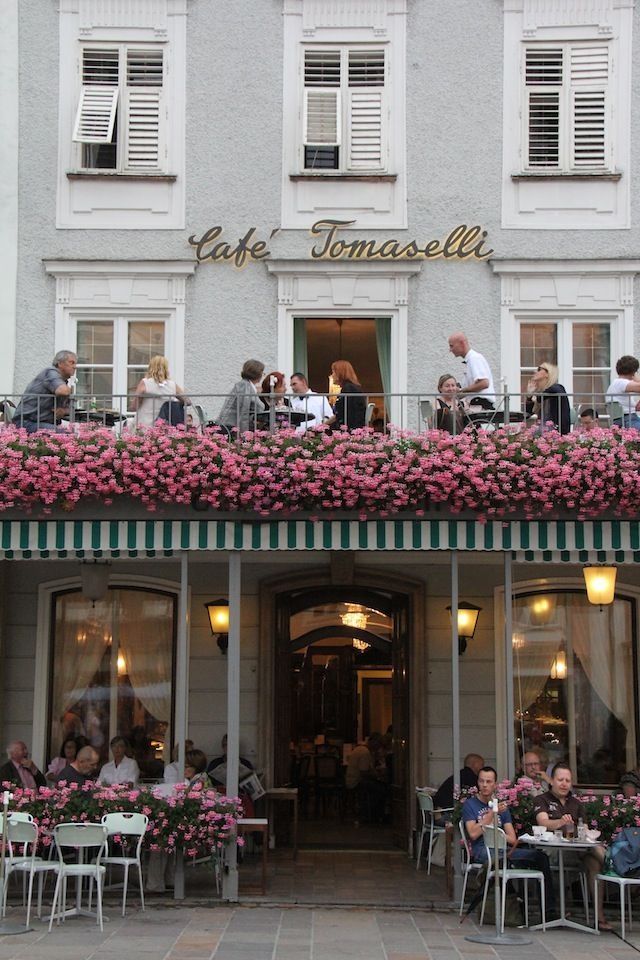
Salzburg is a symphony for the taste buds too. Just off the Old Market Square, savor 300 years of coffee-making tradition at Café Tomaselli, once a favorite haunt of Mozart and his wife, Constanze.
Stiftskeller St. Peter
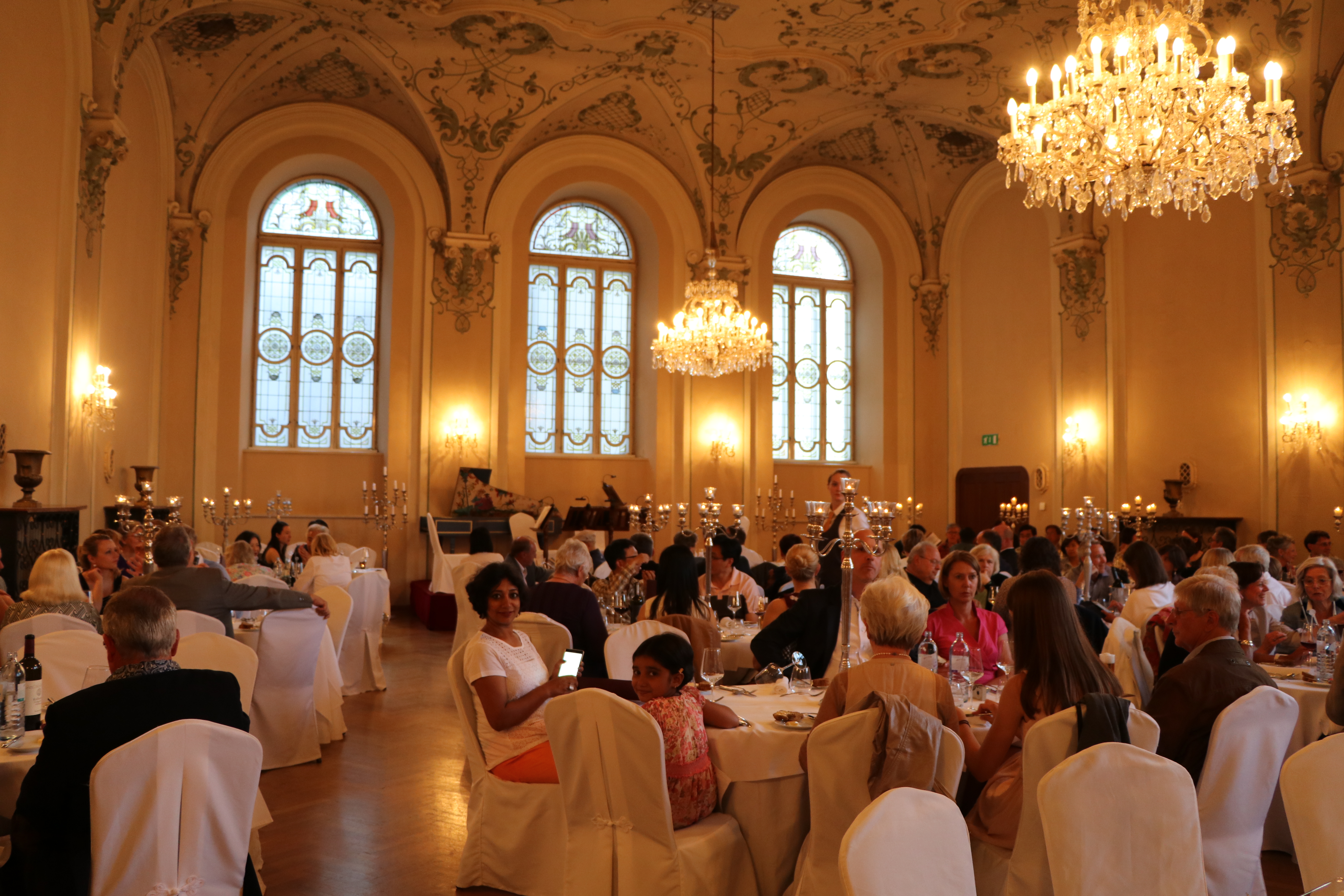
For classical Austrian fare served with a side of Opera, take the short walk to Stiftskeller St. Peter, which has been operating within the walls and vaults of St. Peter’s Monastery for 1,200 years.
According to legend, Columbus is said to have enjoyed a beer here before sailing to America in 1492.
The Müllner Bräu Brewery at Augustiner Abby
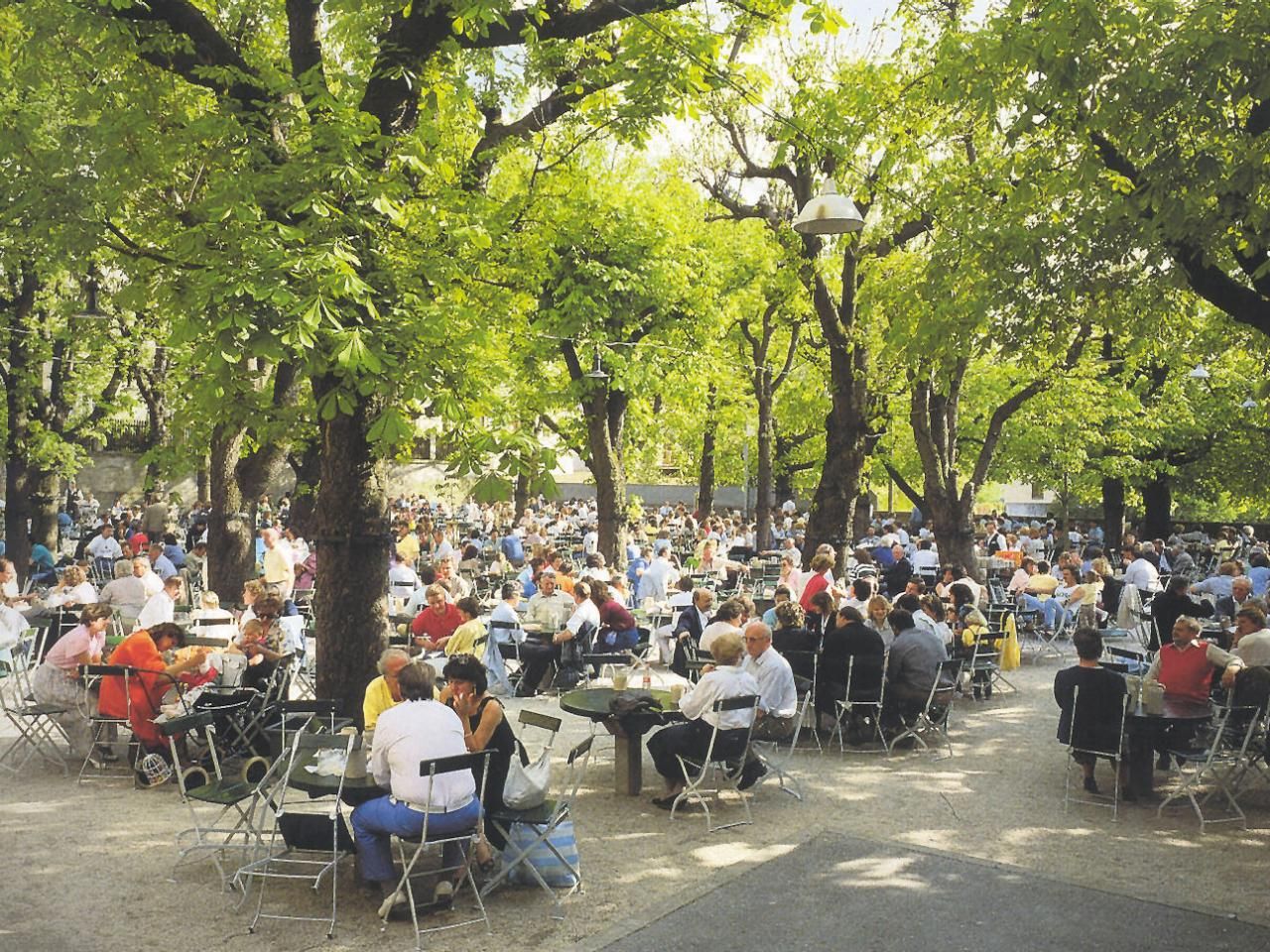
Over the centuries, Salzburg’s monks and hermits have practiced the art of brewing with religious zeal.
At the Müllner Bräu Brewery at Augustiner Abby, rinse out a stone pitcher and enjoy a quarter gallon of beer poured straight from the wooden barrel. Then, hang out in Austria’s largest beer garden and enjoy local snacks with beer devotees from all over the world.
The Salzburg Marionette Theater
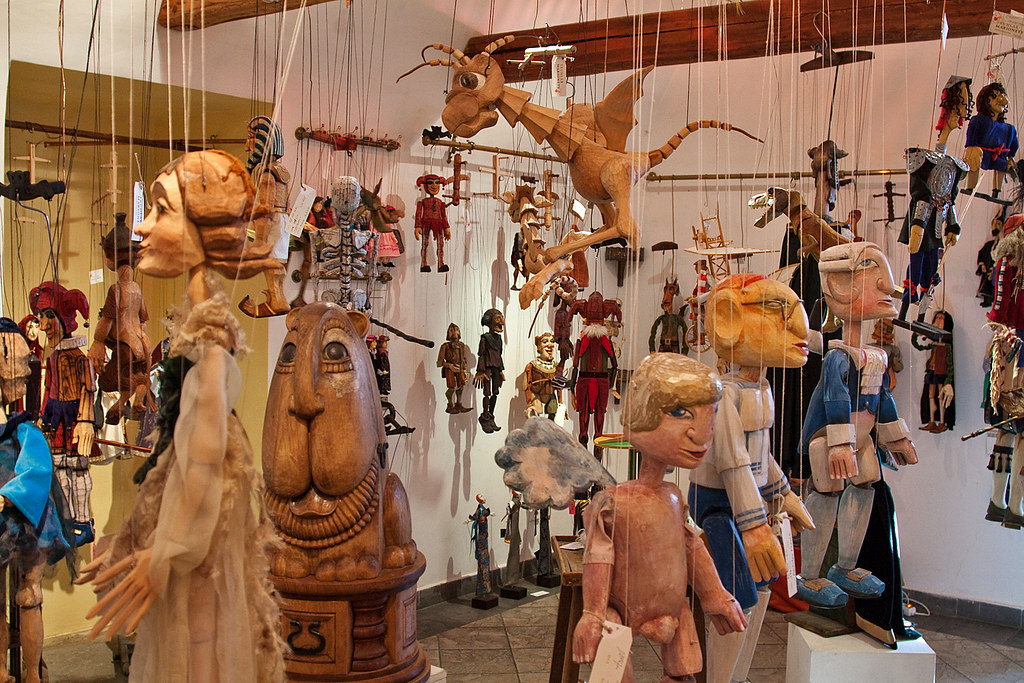
After you’ve explored the finer points of Salzburg hospitality, head across the river to enjoy another of the city’s proudest traditions, puppetry, at the Salzburg Marionette Theater.
The theater opened with Mozart’s opera Bastien und Bastienne over one hundred years ago, and today, the company tours internationally, transporting audiences to imaginary realms far and wide.
The Marionette Theater, the grandeur of Mirabell Palace and Gardens

Salzburg has long been a city where inspiration knows no bounds, especially when it comes to its palaces.
Just a short stroll from the Marionette Theater, the grandeur of Mirabell Palace and Gardens awaits. Commissioned in 1606 by Prince-Archbishop, Wolf Dietrich von Raitenau to impress his beloved mistress, the palace was completed within a staggering six months.
The Italian inspired palace, rose gardens and statue of Pegasus obviously worked their magic, as the pair went on to have 15 children.
Years later, the Prince-Archbishop was deposed, spending the rest of his lonely days interned in the dungeons of Hohensalzburg, overlooking his beloved palace.
Hellbrunn Palace
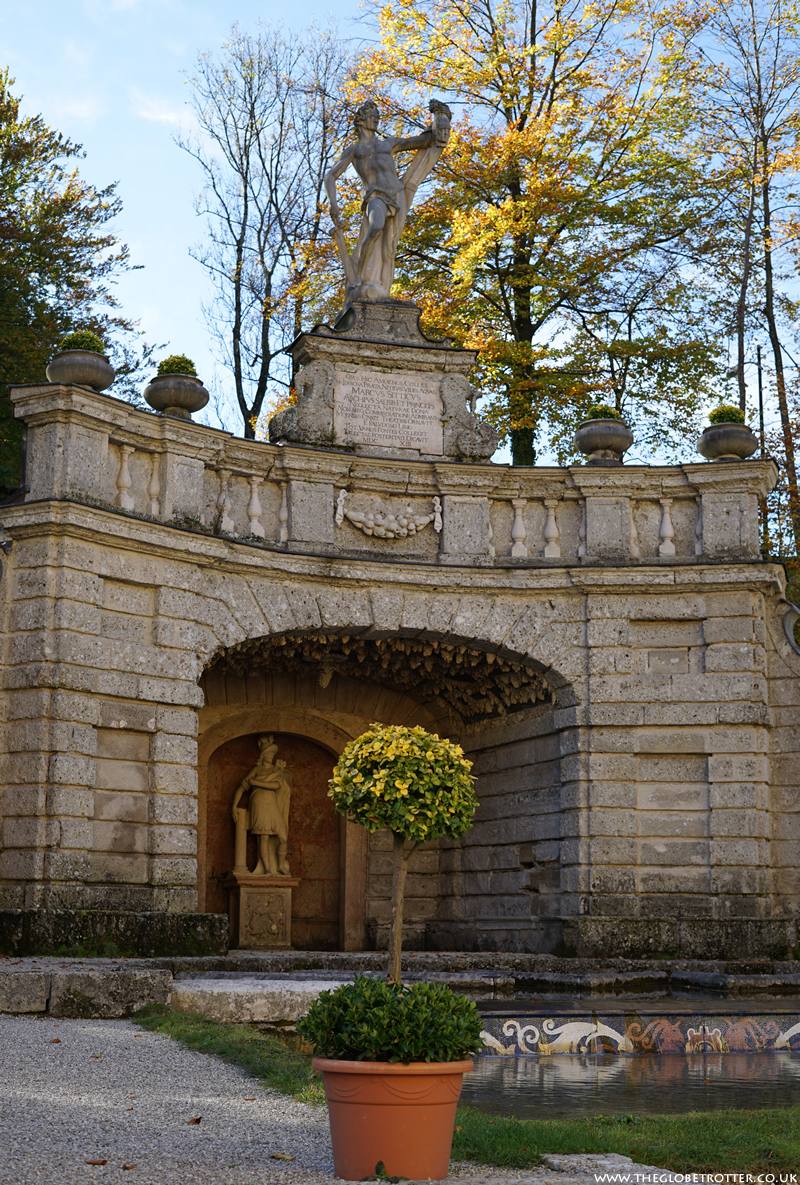
Wolf Dietrich’s successor, Mark Sittich von Hohenems, was given more to practical jokes than matters of the heart. The new Prince-Archbishop created Hellbrunn Palace on Salzburg’s southern outskirts.
This Renaissance-inspired palace was built over a natural spring, which fed hidden water features designed to soak his unsuspecting guests. The grounds are dotted with curiosities, grottos, and water-driven automation, as marvelous today as when the trickster prince led his soaked guests across the grounds 400 years ago.
Built as a summer daytime playhouse, the palace contains not a single bedroom.
Salzkammergut resort region
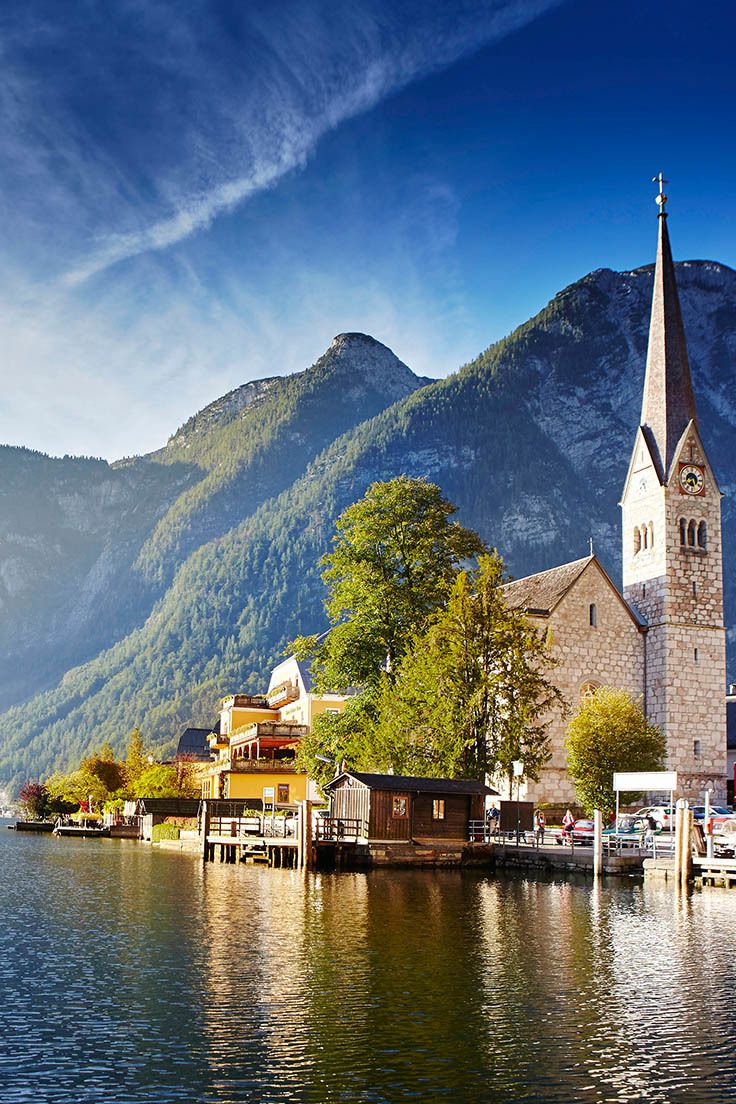
While Salzburg abounds with fountains, some of the cities most impressive water features are its surrounding lakes and waterfalls. Stretching east from the city is the Salzkammergut resort region, home to stunning glacial lakes and picturesque villages.
The lakeside town Mondsee basilica
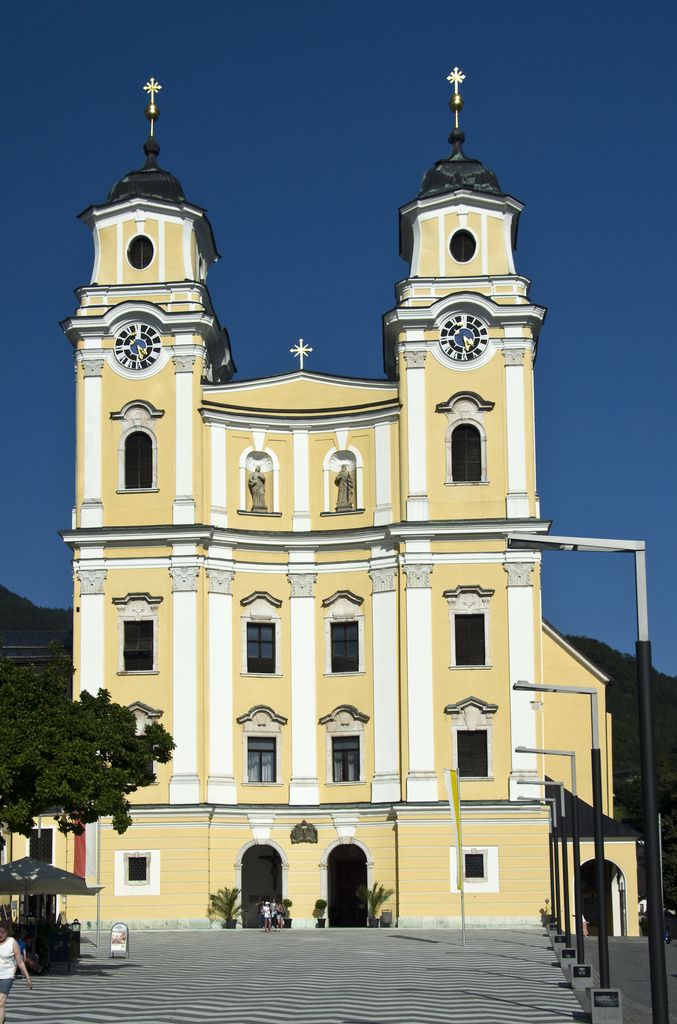
A twenty-minute drive from Salzburg is the lakeside town Mondsee. The town’s basilica starred in the wedding scene in The Sound Of Music and is one of the most photographed churches in the world.
The clear waters of Lake Wolfgang
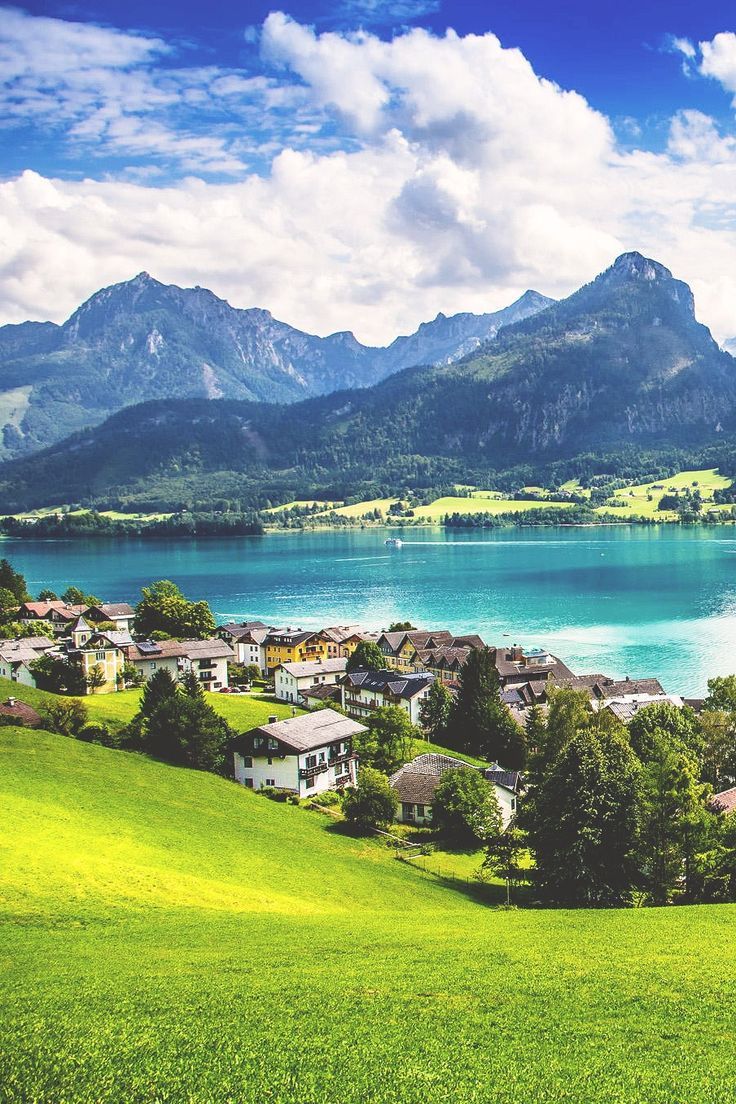
Just to the south of Lake Mondsee, are the clear waters of Lake Wolfgang. Stay a few nights in the sleepy village of Strobl, and let yourself be serenaded by nature’s ever-shifting rhythms and moods.
Krimml Waterfalls
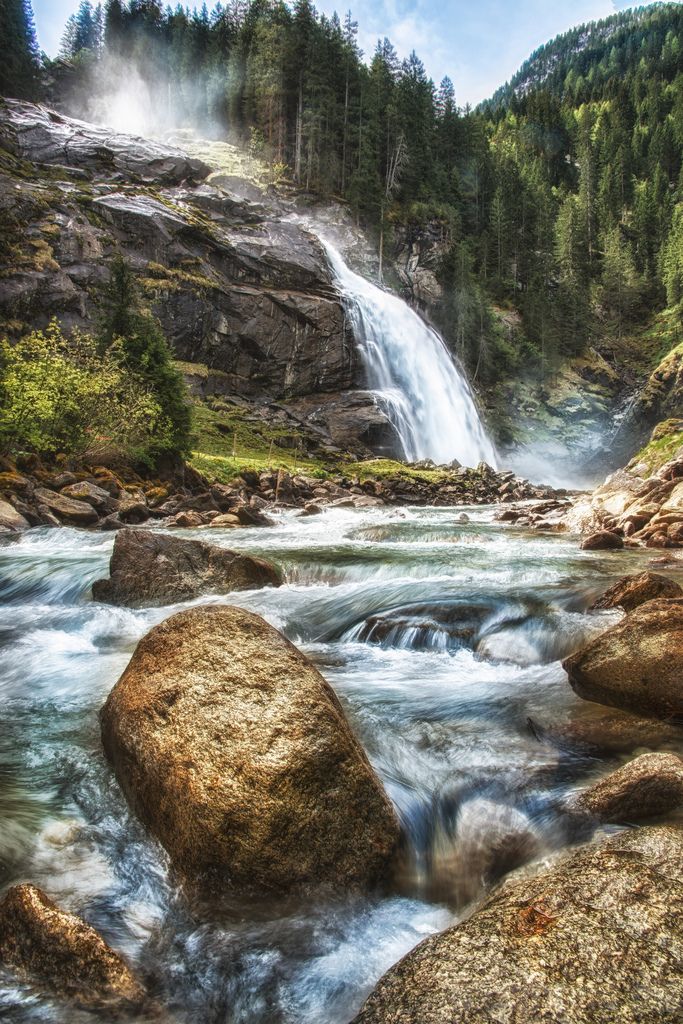
Two-Hour drive southwest from Salzburg, nature’s tempo intensifies, at Krimml Waterfalls. Here, the thundering glacial falls beat in a continuous crescendo throughout the valley, while its drifting mists create the perfect wonderland for mosses, ferns, and lichens.
Bad Gastein falls
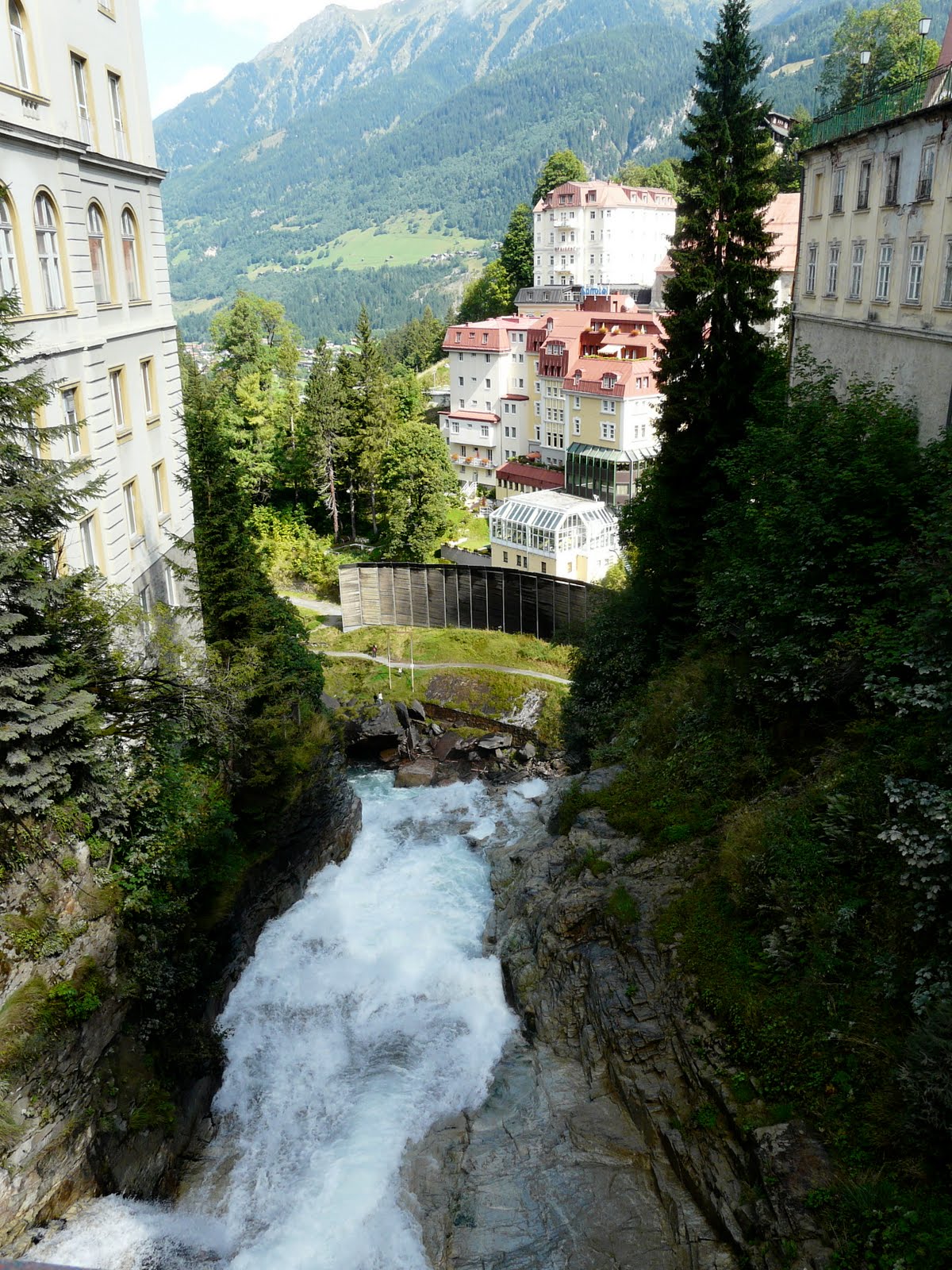
For a waterfall with a difference visit the spa town of Bad Gastein, whose falls roar straight through the heart of town, plunging past historic hotels and into the valley floor below.
The summit of Stubnerkogel Mountain
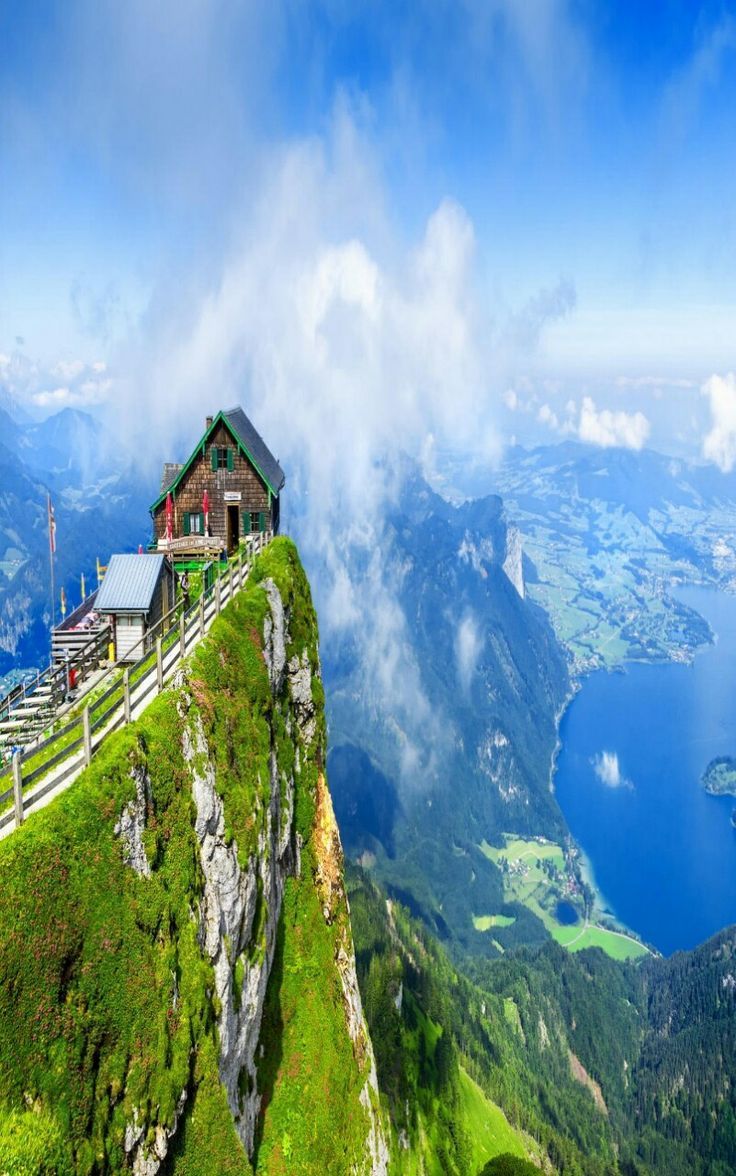
After losing yourself in the mesmerizing spectacle of Bad Gastein Falls, turn your attention skyward. From the town, take the cable car over dreamy alpine meadows to the summit of Stubnerkogel Mountain, and hear the wind singing through the cables of one of Europe’s highest suspension bridges.
The Hallein Salt Mine
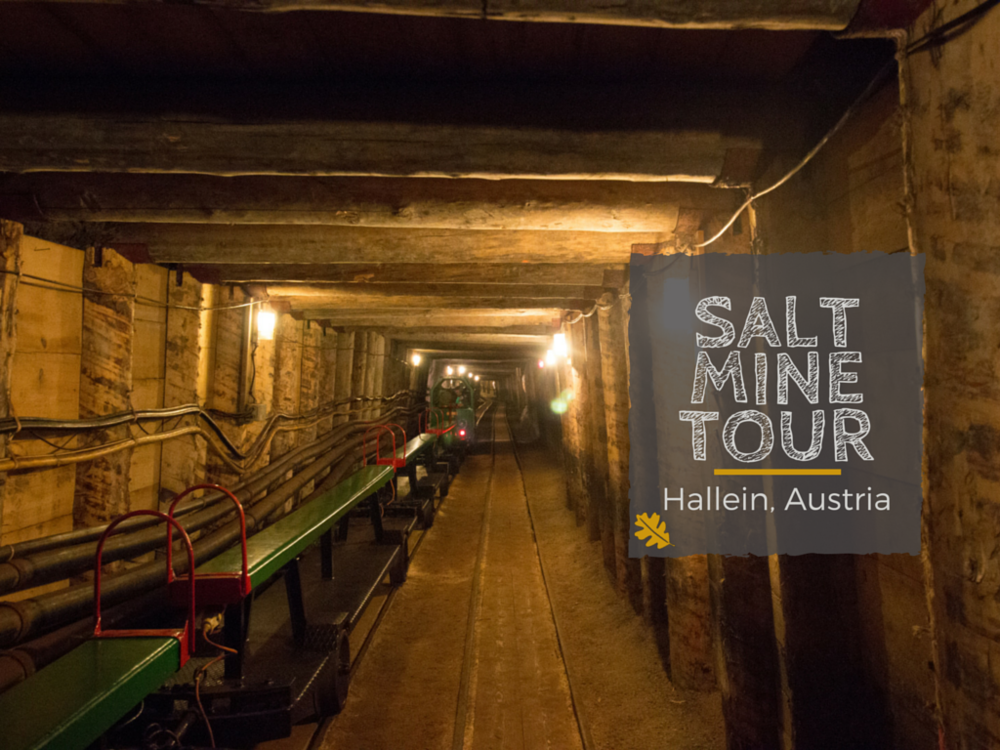
The Salzburg region is full of surprises, so before heading back to the city, head underground, into the Hallein Salt Mine. Take the 70-minute tour deep into this 7,000-year-old mine, whose rich deposits of white gold once gave Salzburg a starring role on the worlds trading stage.
Conclusion
From its salt mines to its symphonies, from its fountains to its waterfalls, Salzburg plays out like a living opera, filled with drama, comedy, intrigue, and passion. And it all awaits, in a setting perfectly crafted by the human hand, and by the greatest composer of them all, Mother Nature.
Salzburg is more than just a city, it is a triumph!
